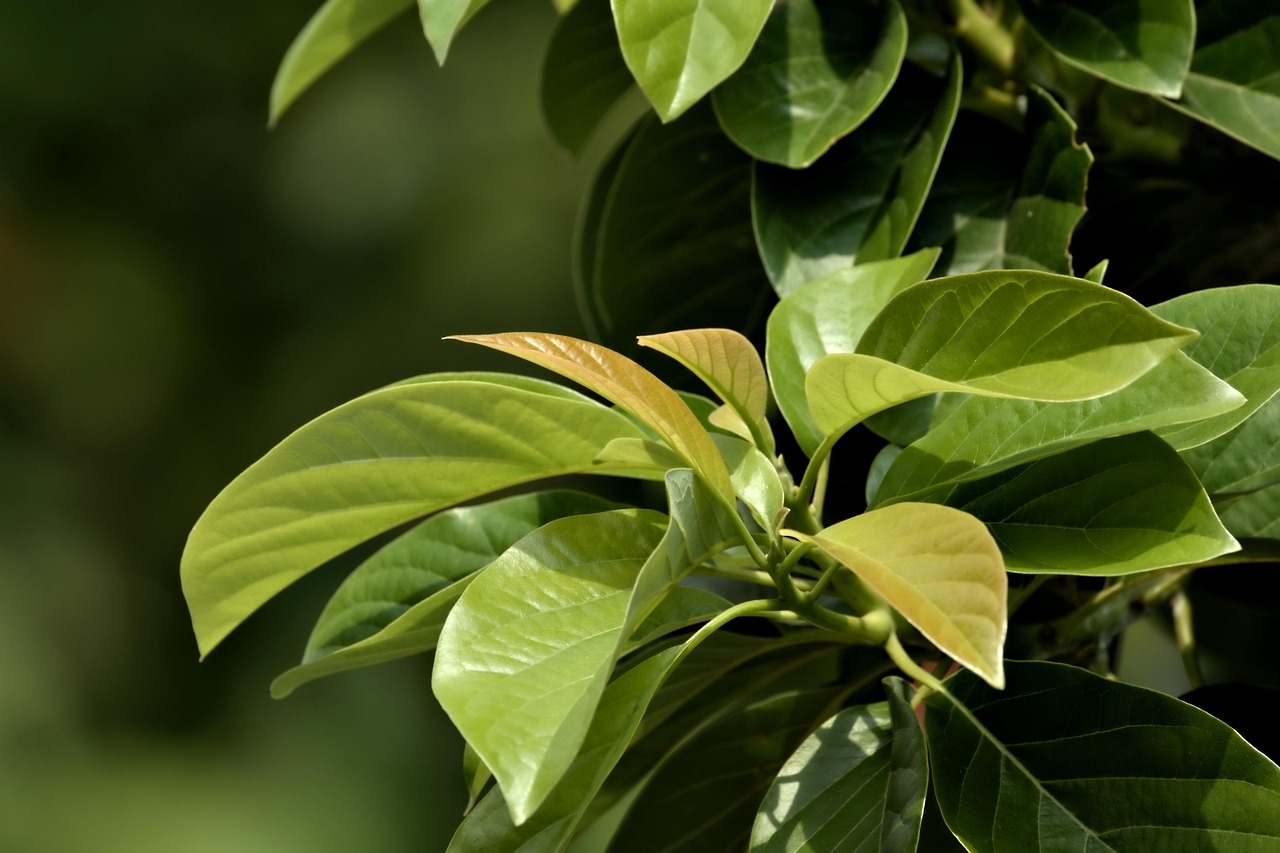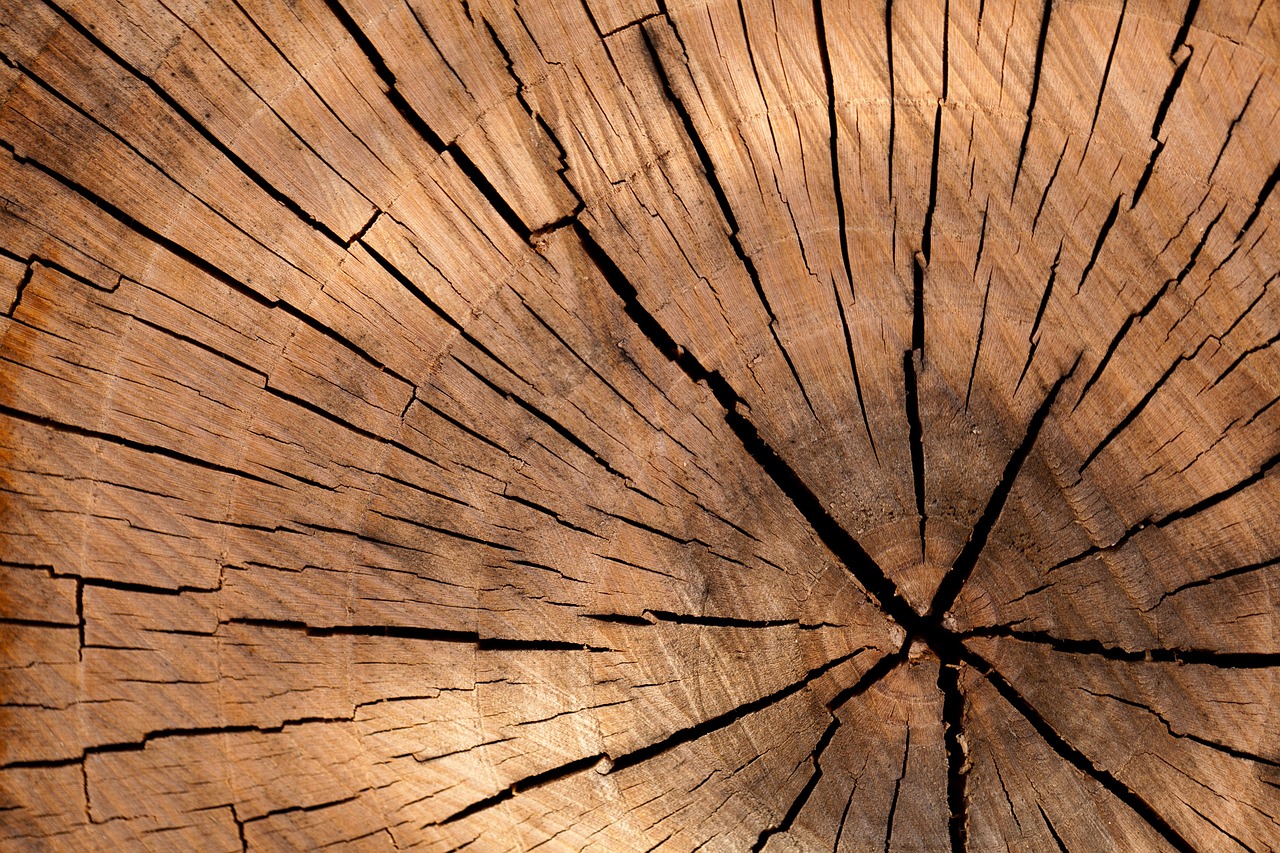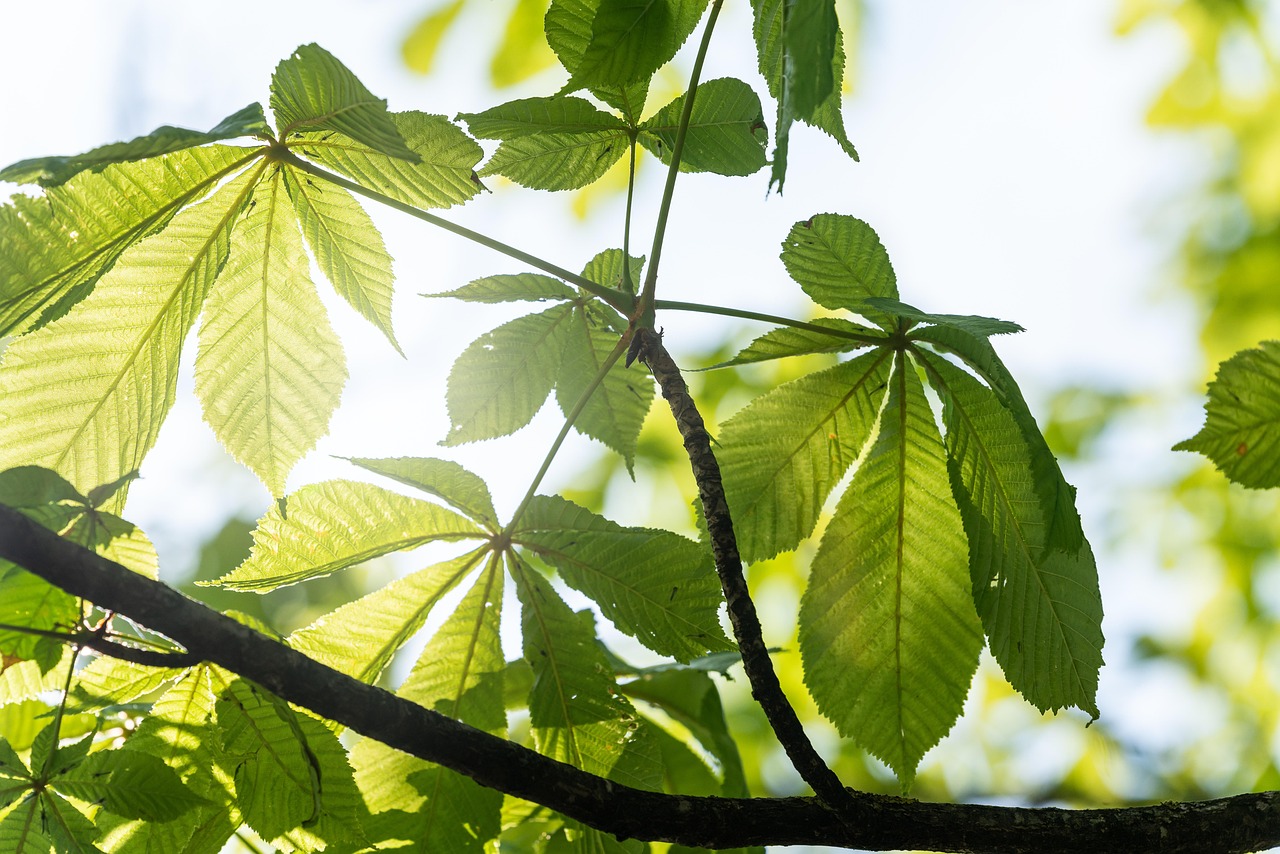Tree growth rates vary significantly by species, influencing their suitability for different environments and purposes. Fast-growing trees are ideal for quick shade or timber, while slower-growing species often offer more durability and ecological benefits.
Understanding Tree Growth Rates
Tree growth rates refer to how quickly a tree increases in height and biomass over time. This rate can differ widely among species due to factors such as genetics, climate, soil quality, and available water. Understanding these rates is vital for anyone involved in forestry, landscaping, or ecological restoration. Selecting the right species based on growth rates can impact landscape aesthetics, ecological balance, and even the economic viability of timber production.

Fast-growing trees can be beneficial in a variety of scenarios. They can provide shade, improve air quality, and even enhance property value in a relatively short period. However, these trees often have softer wood and may be more susceptible to diseases or pests. Conversely, slower-growing trees tend to be hardier and may live longer, making them suitable for long-term projects or conservation efforts.
When selecting tree species, it is crucial to consider not only growth rates but also the specific environmental conditions where the trees will thrive. Factors such as local climate, soil type, and water availability play significant roles in determining which species will perform best in a given location.
Factors Influencing Growth Rates
Several key factors influence the growth rates of trees. Understanding these factors can aid in making informed decisions when choosing tree species for planting.

- Species Type: Different species have inherently different growth characteristics.
- Climate: Temperature, sunlight, and precipitation levels affect growth.
- Soil Quality: Nutrient-rich soils promote faster growth compared to poor soils.
- Water Availability: Adequate water supply is crucial for healthy growth.
- Pests and Diseases: Vulnerability to pests can hinder growth rates.
To further illustrate the differences in growth rates among various tree species, the following table summarizes some common types and their average growth rates:
| Tree Species | Average Growth Rate (inches per year) | Typical Height at Maturity (feet) |
|---|---|---|
| Lombardy Poplar | 3-5 | 40-60 |
| Red Maple | 2-3 | 40-60 |
| Oak (White) | 1-2 | 50-80 |
| Pine (Eastern White) | 2-3 | 50-80 |
| Birch (River) | 2-3 | 40-70 |
This table provides a quick reference for comparing tree growth rates by species. As shown, some trees like the Lombardy Poplar grow much faster than others like the Oak. However, the choice of tree should also take into account their mature height and potential ecological impacts.
In addition to growth rates and physical characteristics, it is essential to consider the intended use of the trees. For example, if the goal is to create a windbreak or privacy screen, fast-growing species may be preferred. Conversely, if the focus is on long-term sustainability or enhancing biodiversity, slower-growing native species may be a better choice.

Ultimately, making an informed decision about tree selection involves balancing growth rates with other factors such as ecological benefits, maintenance requirements, and overall landscape goals. This approach ensures that the chosen species will thrive in their intended environment while providing maximum benefit over time.
Choosing the Right Tree Species for Your Needs
When selecting tree species for planting, it is important to align your choice with the specific needs and goals of your landscape. There are various factors to consider, including growth rate, environmental adaptability, and the intended function of the trees. Here, we will explore some of the key considerations for making the best choice.
Understanding Your Landscape
Before selecting tree species, it is crucial to analyze your landscape. Consider the following aspects:

- Climate: Assess the local climate, including temperature ranges, rainfall patterns, and seasonal changes.
- Soil Type: Examine the soil’s texture, pH level, and nutrient content. Different species thrive in different soil conditions.
- Space Availability: Determine how much space is available for tree growth, including height and width at maturity.
- Sunlight Exposure: Observe how much sunlight the area receives throughout the day, as some trees prefer full sun while others can tolerate shade.
Tree Functions and Uses
Identifying the intended purpose of your trees can help narrow down your choices. Here are some common functions of trees in landscaping:
- Shade Provision: Fast-growing species like the Red Maple or Silver Maple are excellent for creating shaded areas.
- Windbreaks: Trees such as Eastern Red Cedar or Norway Spruce can provide effective barriers against wind.
- Aesthetic Appeal: Flowering trees like Cherry Blossoms or Dogwoods offer visual beauty during blooming seasons.
- Wildlife Habitat: Native species can support local wildlife by providing food and shelter.
- Privacy Screens: Dense-growing varieties like Leyland Cypress can create natural privacy barriers quickly.
Evaluating Growth Rates by Purpose
The purpose of planting trees significantly influences the desired growth rate. Below are some examples of how growth rates relate to different landscaping goals:
Fast-Growing Trees
If your primary goal is immediate results, consider fast-growing species. These trees can establish quickly and provide benefits in a shorter timeframe. Some popular fast-growing options include:
- Lombardy Poplar: Known for its rapid growth and tall stature, ideal for quick screening.
- Ash Trees (Green Ash): Fast-growing and adaptable to various conditions.
- Willow Trees: Thrive near water sources and grow rapidly, providing shade and beauty.
Slow-Growing Trees
For projects focused on longevity and sustainability, slower-growing species may be more suitable. These trees often have denser wood and greater resistance to pests. Consider the following slow-growing options:
- Oak Trees (White Oak): Although slow to establish, they provide lasting benefits and habitats for wildlife.
- Pine Trees (Eastern White Pine): Slow-growing yet resilient, ideal for long-term landscapes.
- Cypress Trees (Bald Cypress): Known for their durability and ability to thrive in wet conditions.
The Importance of Native Species
Native tree species are particularly beneficial for local ecosystems. They typically have established relationships with native wildlife and are well-adapted to local soil and climate conditions. Here are some advantages of planting native trees:
- Ecological Benefits: Native trees support local flora and fauna by providing food and habitat.
- Drought Resistance: Native species are often more drought-resistant, reducing the need for supplemental watering.
- Pest Resistance: These trees have evolved alongside local pests and diseases, making them more resilient.
- Aesthetic Consistency: They contribute to the natural beauty and character of the region.
Selecting the right tree species requires careful consideration of growth rates and other factors. By understanding your landscape’s conditions and evaluating your goals, you can make informed decisions that will enhance your environment effectively.
Common Tree Species and Their Growth Rates
When considering tree species for planting, understanding the specific growth rates of common options can help in making informed decisions. Different trees not only have varying growth rates but also differ in their environmental needs and benefits. Below, we will explore several popular tree species, their average growth rates, and what makes them unique.
Fast-Growing Tree Species
Fast-growing trees are often sought after for their ability to quickly provide shade, privacy, or aesthetic appeal. Here are some notable fast-growing tree species:
- Lombardy Poplar: A standout for its rapid growth, this tree can grow up to 5 feet per year. It is commonly used for windbreaks and privacy screens.
- Red Maple: Known for its vibrant fall foliage, the Red Maple can grow 2 to 3 feet each year and adapts well to various soil types.
- Silver Maple: This species can reach heights of 50 to 80 feet and grows rapidly, making it a popular choice for quick shade.
- Ash (Green Ash): With a growth rate of about 2 to 3 feet per year, the Green Ash is resilient in many conditions and provides excellent shade.
Moderate-Growing Tree Species
Some trees grow at a moderate pace, offering a balance between speed and durability. These species may take a bit longer to establish but often prove to be more resilient over time. Consider these moderate-growing options:
- Pine (Eastern White): Growing at a rate of 1 to 2 feet per year, this tree is known for its tall, straight trunk and adaptability to various climates.
- Birch (River Birch): This attractive tree grows about 2 to 3 feet annually and provides excellent wildlife habitat while thriving near water sources.
- Dogwood: Known for its beautiful flowers, the Dogwood grows approximately 1 foot per year and adds aesthetic value to landscapes.
Slow-Growing Tree Species
While slow-growing trees may take longer to reach maturity, they often offer longer lifespans and increased durability. Here are some examples of slow-growing species:
- Oak (White Oak): This majestic tree grows about 1 foot per year and is valued for its strong wood and ecological benefits.
- Cypress (Bald Cypress): Gaining about 1 foot annually, this tree thrives in wet conditions and supports diverse wildlife.
- Redwood: Renowned for its impressive height, the Redwood grows slowly at about 1 to 2 feet per year but can live for thousands of years.
Environmental Considerations When Choosing Trees
Selecting the right tree species involves not only understanding growth rates but also considering their environmental impact. Here are some key factors to keep in mind:
Biodiversity Enhancement
Planting a variety of species can enhance biodiversity in your area. Here are some benefits of increasing tree diversity:
- Ecological Stability: Diverse plant life can support a broader range of wildlife.
- Pest Management: Mixed-species planting can reduce the likelihood of pest outbreaks, as pests tend to favor certain species.
- Soil Health: Different root structures can improve soil health by preventing erosion and enhancing nutrient cycling.
Impact on Local Climate
Trees play a significant role in moderating local climates. Consider how your chosen species might affect the surrounding environment:
- Shade Provision: Trees provide shade that can reduce local temperatures and lower energy costs for cooling buildings.
- Carbon Sequestration: Trees absorb carbon dioxide, helping mitigate climate change effects.
- Air Quality Improvement: Trees filter pollutants from the air, contributing to better overall air quality.
The Role of Tree Maintenance in Growth Rates
The growth rate of trees can be significantly influenced by maintenance practices. Proper care helps ensure that trees reach their full potential. Here are some essential maintenance practices:
- Watering: Young trees require consistent watering to establish their root systems. It’s crucial to monitor moisture levels, especially during dry spells.
- Fertilization: Applying appropriate fertilizers can enhance growth by supplying necessary nutrients.
- Pruning: Regular pruning helps shape trees and remove dead or diseased branches, promoting healthier growth.
- Pest Control: Monitoring for pests and diseases early can prevent serious damage and maintain growth rates.
By combining knowledge of growth rates with thoughtful planning and maintenance practices, you can create a thriving landscape that meets your needs while contributing positively to the environment.
Long-Term Benefits of Tree Planting
Planting trees is an investment in the future, offering both immediate and long-term benefits. Understanding the growth rates of different species helps in making informed decisions that align with personal goals and environmental needs. Here are some long-term advantages of selecting the right tree species:
- Environmental Impact: Trees play a crucial role in combating climate change by absorbing carbon dioxide and releasing oxygen. They also help to filter air pollutants, improving air quality.
- Economic Value: Well-planned landscapes with trees can increase property values. Mature trees are often seen as assets, providing shade and enhancing curb appeal.
- Energy Savings: Strategically placed trees can lower energy costs by providing shade in the summer and acting as windbreaks in the winter, reducing heating and cooling needs.
- Wildlife Support: Trees provide habitats for various species, contributing to biodiversity and supporting local ecosystems.
- Aesthetic Enhancement: Trees enhance the beauty of urban and rural landscapes, creating inviting spaces for communities and individuals alike.
Choosing Wisely: A Holistic Approach
Choosing tree species based solely on growth rates can be limiting. A holistic approach encompasses various aspects such as ecological compatibility, maintenance needs, and personal objectives. Here are some strategies for ensuring a wise selection:
- Research Local Species: Familiarize yourself with native tree species that thrive in your area. Local nurseries often offer insights into the best choices for your environment.
- Consult Professionals: Landscape architects or arborists can provide valuable expertise in selecting appropriate species based on your landscape goals and conditions.
- Plan for the Future: Consider how trees will grow over time, including their mature size and potential impact on surrounding structures or plants.
- Diversify Your Choices: Planting a variety of species can enhance resilience against pests and diseases, creating a healthier ecosystem.
Final Thoughts
The right selection of tree species based on growth rates is a crucial step toward creating a thriving landscape. By understanding the unique characteristics of each species and their suitability for your specific environment, you can make informed decisions that support both your personal goals and the ecological health of your area.
Fast-growing trees can provide immediate benefits like shade and privacy, while slower-growing species often offer durability and longevity. It’s essential to consider not only growth rates but also factors such as ecological impact, maintenance requirements, and how these trees will fit into your overall landscape vision.
As we face ongoing challenges related to climate change and urbanization, planting trees becomes increasingly vital. Trees assist in improving air quality, reducing heat, and enhancing biodiversity, making them indispensable allies in our environmental efforts. By making thoughtful choices about which trees to plant, you contribute to a healthier planet for future generations.
Ultimately, the process of choosing tree species should be guided by careful planning, research, and a commitment to sustainability. Embrace the opportunity to create a diverse landscape that not only meets your immediate needs but also nurtures the environment in the long run. Your efforts in tree selection will yield rewards for years to come, both for you and the ecosystem at large.
